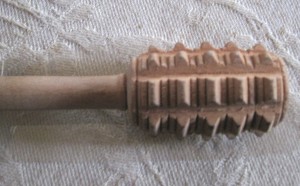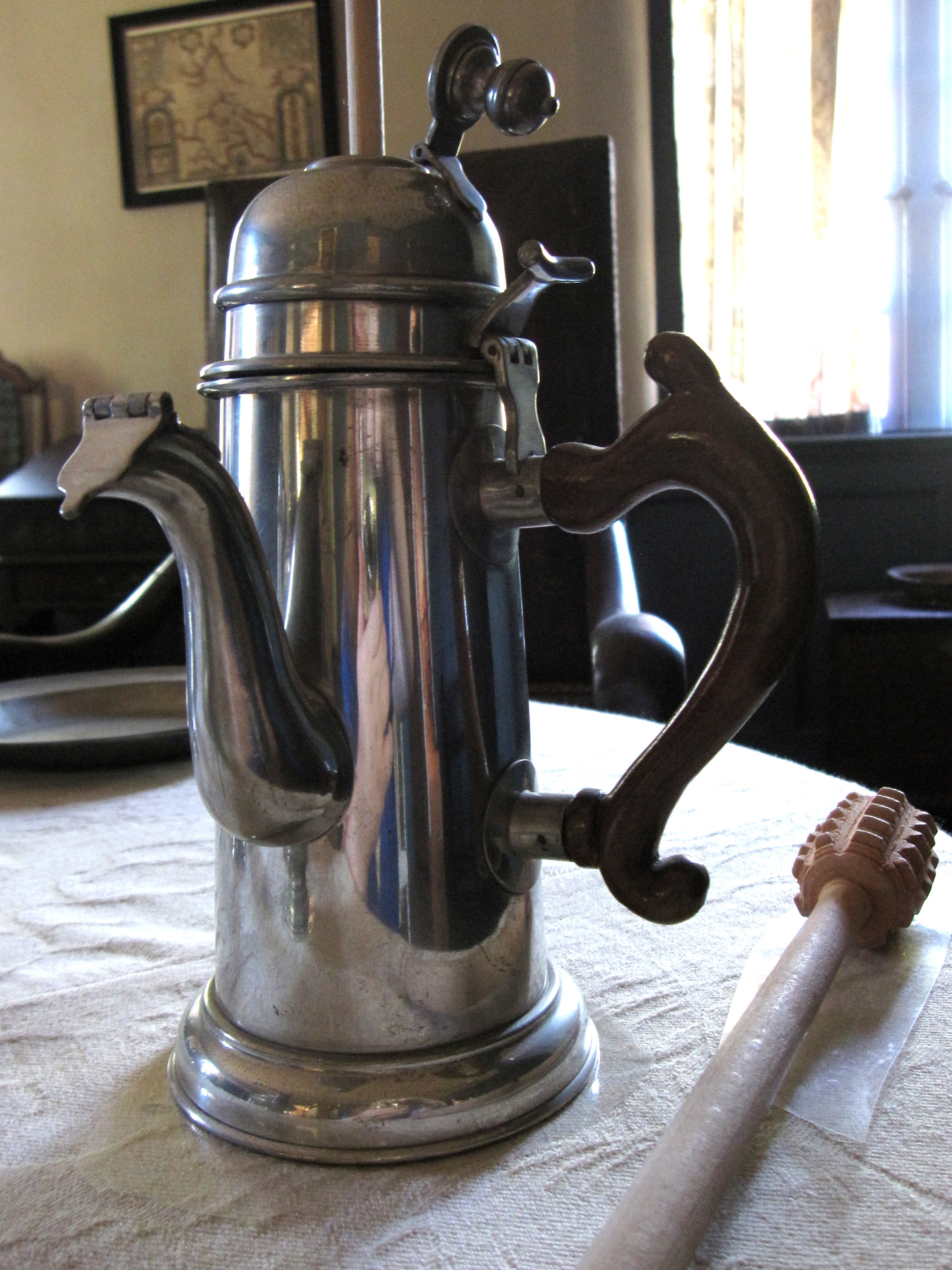
For reservations to experience “nkwiluntàmën: I long for it; I am lonesome for it (such as the sound of a drum)” by Indigenous artist Nathan Young, please go to https://nkwiluntamen.com/
September Collections Featurette
- September 6, 2010
- Posted By: Pennsbury Manor
Pewter Chocolate Pot
Date of Origin: reproduction, original circa 1708
Description: Reproduction of a silver chocolate pot made by John Wisdom in London of English Silver and currently owned by Williamsburg. Has lidded spout and hinged finial.
William Penn’s time in Pennsylvania occurred during the height of drinking chocolate’s popularity. As a member of the upper-class and the governor of Pennsylvania, Penn was not only able to enjoy this fashionable new beverage; he would have been expected to do so. His preference for drinking chocolate and his strong desire to obtain it while he was in Pennsylvania, where it was even more rare than in London, is shown in a letter he wrote in August of 1700 to his associate Logan asking for him to send chocolate to Pennsbury “by all means, if to be had”.

The cacao tree is generally thought to have originated from the Amazon in South America and spread to the surrounding regions by man. The earliest evidence of the beans use for consumption is from as early as 1100 B.C.E. with cacao residue found on pottery in Honduras. However, it wasn’t until Cortez conquered the Aztecs in the early sixteenth century that chocolate was discovered by the Spanish, who then brought it to Europe.
Production and distribution of chocolate did not emerge in England until after 1655, when the British capture of Jamaica and its cacao plantations made the cacao beans available for trade. Once there, the popularity of chocolate exploded with the first chocolate houses appearing just two years later in 1657. Chocolate, along with coffee and tea, brought caffeine to Europeans for the first time, creating an entirely new type of beverages which were non-alcoholic and served to stimulate the mind and body. Due to the fact that the beans could not be grown locally and had to be imported from far away, chocolate was extremely expensive: when the first chocolate house opened in 1657 its price per pound would today have been somewhere between 50 and 75 USD. This meant that chocolate was a luxury reserved for the upper class until the invention of the steam engine in the late eighteenth century enabled its mass shipment across the continents. It continued to find favor with consumers, establishing itself as the favored morning beverage of the elite to be enjoyed daily with breakfast. Drinking chocolate reached was at the height of its popularity during the late seventeenth and the early eighteenth centuries, but had largely been discarded in favor of tea by the end of the next fifty or so years.
by Rebecca Remmey
For Further Reading:
Bensen, Amanda. “A Brief History of Chocolate”. Smithsonian Magazine. March 01, 2008. Smithsonian Institution: Smithsonian.com.
http://www.smisonianmag.com/arts-culture/brief-history-of-chocolate.html.
Cavicchi, Clare Lise. Pennsbury Manor Furnishing Plan.
Davis, John D. English Silver at Williamsburg. 1976.
Phillips, Phoebe. The Collectors’ Encyclopedia of Antiques. New York: Bonanza Books and Crown Publishers, Inc., 1978.
Thirsk, Joan. Food in Early Modern England: Phases, Fads, Fashions 1500-1760. New York: Continuum Books, 2007.
Wilson, C. Anne. Food & Drink in Britain. Constable London.

